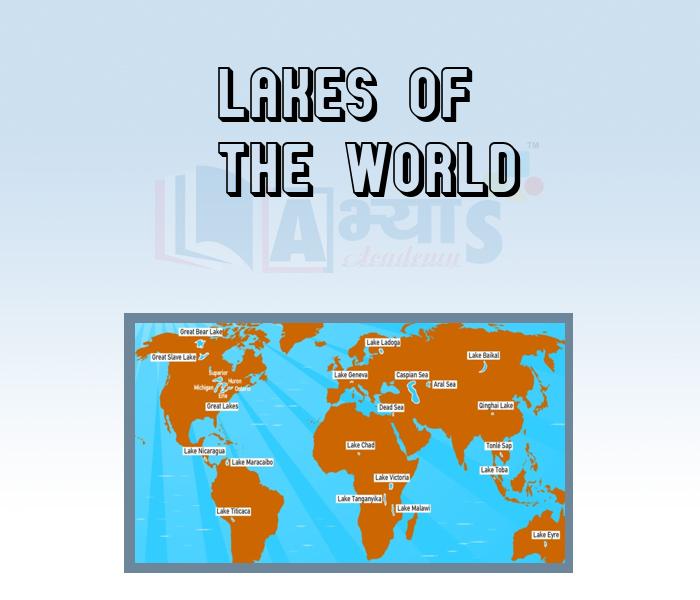Lakes Of The World

Lakes Of The World
Lakes: Lakes are inland bodies of standing water. Although millions of lakes are scattered over Earth's surface, most of them are located in higher latitudes and mountainous areas. Based on the mode of their formation, lakes can be classified as-glacial lakes, reverine lakes, volcanic lakes, meteoritic lakes, etc.The Great Lakes of the United States and Canada are the world's largest systerm of freshwater lakes. Lake Superior, the northernmost of the Great Lakes, is the world's largest freshwater lake with an area of 31,820 square miles (82,730 square kilometres). Some freshwater lakes become salty over time, especially in and regions. Because the water in these lakes evaporates quickly, the salt from inflowing waters reaches a high concentration. Among the world's greatest salt lakes are the Caspian Sea, Dead Sea, and Great Salt Lake. Covering an area of about 144,000 square miles (372,960 square kilometres), the Caspian Sea is the largest lake in the world. At 1,292 feet (394 meters) below sea level, the Dead Sea is the lowest lake in the world.MAJOR LAKES (by size):
Caspian Sea, Asia-Europe (371,000 sq km)
Superior, North America (82,100 sq km)
Victoria, Africa (69,500 sq km)
Huron, North America (59,600 sq km)
Michigan, North America (32,900 sq km)
Tanganyika, Africa (32,900 sq km)
Baikal, Asia (31,500 sq km)
MAJOR RIVERS (by length):
Nile, Africa (6,825 km)
Amazon, South America (6,437 km)
Chang Jiang (Yangtze), Asia (6,380 km)
Mississippi, North America (5,971 km)
Yenisey-Angara, Asia (5,536 km)
Students / Parents Reviews [10]
It was a good experience with Abhyas Academy. I even faced problems in starting but slowly and steadily overcomed. Especially reasoning classes helped me a lot.

Cheshta
10thA marvelous experience with Abhyas. I am glad to share that my ward has achieved more than enough at the Ambala ABHYAS centre. Years have passed on and more and more he has gained. May the centre flourish and develop day by day by the grace of God.

Archit Segal
7thOne of the best institutes to develope a child interest in studies.Provides SST and English knowledge also unlike other institutes. Teachers are co operative and friendly online tests andPPT develope practical knowledge also.

Aman Kumar Shrivastava
10thI have spent a wonderful time in Abhyas academy. It has made my reasoning more apt, English more stronger and Maths an interesting subject for me. It has given me a habbit of self studying

Yatharthi Sharma
10thMy experience with Abhyas academy is very good. I did not think that my every subject coming here will be so strong. The main thing is that the online tests had made me learn here more things.

Hiya Gupta
8thMy experience with Abhyas is very good. I have learnt many things here like vedic maths and reasoning also. Teachers here first take our doubts and then there are assignments to verify our weak points.

Shivam Rana
7thAbhyas Methodology is very good. It is based on according to student and each child manages accordingly to its properly. Methodology has improved the abilities of students to shine them in future.

Manish Kumar
10thAbout Abhyas metholodology the teachers are very nice and hardworking toward students.The Centre Head Mrs Anu Sethi is also a brilliant teacher.Abhyas has taught me how to overcome problems and has always taken my doubts and suppoeted me.

Shreya Shrivastava
8thAbhyas is a complete education Institute. Here extreme care is taken by teacher with the help of regular exam. Extra classes also conducted by the institute, if the student is weak.

Om Umang
10thIt has a great methodology. Students here can get analysis to their test quickly.We can learn easily through PPTs and the testing methods are good. We know that where we have to practice








